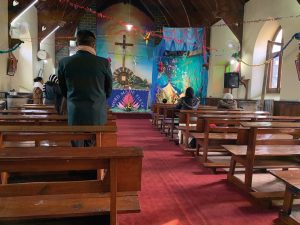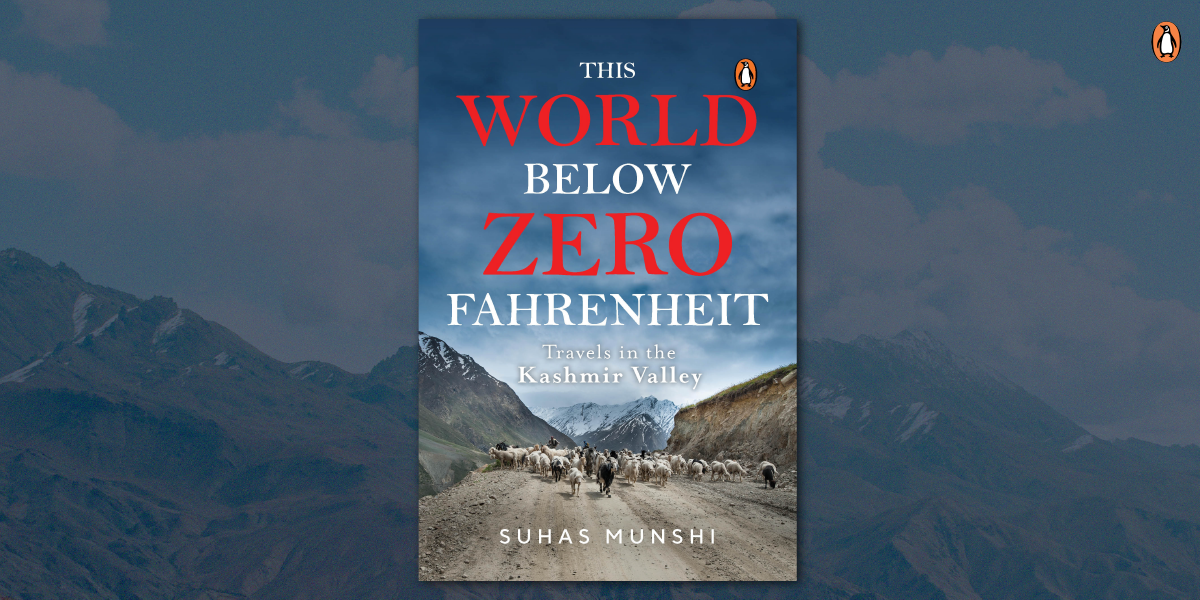This World Below Zero Fahrenheit: Travels in the Kashmir Valley is an insightful travelogue that breaks away from the clichéd view of Kashmir, one that sees it either as an earthly paradise or a living hell. In this book, Suhas Munshi takes you to unexpected places, into the homes of poets, playwrights and street performers; to a heartwarming Christmas service with the minuscule Christian community in Baramulla; and inside the barricaded city of Srinagar’s football stadium, which is a lively refuge for the elderly and their memories of a glorious past.
Here is an excerpt from the chapter ‘Merry Christmas in Baramulla’ for you to experience the Kashmir presented by Suhas Munshi in his book.
–
Up there, on the bridge, it was so cold that staying a minute longer was impossible. I spotted a masala-wallah. Masala is a unique Kashmiri street-food item. Soft bread wrapped around chickpeas laced with a spicy chutney. I polished it off as I reached my destination, St Joseph’s Church. St Joseph’s school and hospital, two institutions run by missionaries of the church for hundreds of years, were the best in the area. They had also suffered casualties during the 1947 tribal raids. But I hadn’t come to talk to anyone about violence, old or new. It was 24 December, and I was here to celebrate Christmas Eve.

As I stood outside the church, beside a cheerful-looking Santa Claus figure, a woman approached me. ‘Excuse me, who are you?’ she asked. It naturally made a lot of sense to be watchful around these parts. I told her that I was writing a travelogue. I had met the vice principal of their school two days earlier and sought permission to join in the Christmas Eve celebrations. I couldn’t say for sure how much my answer had satisfied her because just then a man, who looked like a local and was presumably an employee there, arrived with some sweets and extended his best wishes to the nun. She asked him to stay a while but he was in a hurry. She offered to take him on a quick tour of the church. ‘You also,’ she said to me with unquestionable authority, ‘you also come along. We’ll all pray.’
We first gazed at the life-sized figure of Santa Claus. One of his arms was extended in an invitation for embrace. The other one rested on a stick. Next to him was a tree with strings of decorative, colourful lights. From the canopy above the church door were hung several loops of the same decorative lights. High above the church was a neon-lit Star of David. It was a small church built mostly of stone and brick.
‘You know the story of Santa Claus comes from St Nicholas actually. There was once a poor man who was very worried about how to marry off his three daughters. He was very distressed. St Nicholas arrived at his doorstep and quietly dropped off three bags of gold. That’s how Santa Claus, the quiet, silent beneficiary, came into existence. So every Christmas Eve we invite him to come to us again and shower us with gifts,’ she explained.
We took a step sideways to admire the Christmas tree. ‘This tree symbolizes the cross where Jesus died and also his birth. In Rome I have seen bread becoming flesh. When the priest prays over it, holy wine becomes blood. Jesus Christ comes alive in the mass. Come,’ she said in a staccato burst and asked us to step into the church. We took our shoes off and went in.

People praying at St Joseph’s Church, Baramulla, on Christmas Day
Despite four bukharis—the large wood-burning stoves that are Kashmir’s traditional heaters—the church was as cold within as it was outside. And the outside was very cold. These were the days of Chillai Kalan, the harshest forty-day period in Kashmir when even piped water freezes and all water, including the Dal, turns to ice. But it was extra cold this season. ‘It mostly snows by this time and the temperature improves. But this time it hasn’t snowed, so it is much colder this time,’ the watchman outside the church had told me.
Next to the pulpit, the parishioners had built a beautiful minisized manger, complete with snow and colourful lights, small plants and dry twigs, in the backdrop of a blue satin-like material. From the ceiling were hung cut-outs of various letters in different languages. Colourful lights made these letters glow brilliantly. Right in front of us, the pulpit was decorated with lights and colourful fabric, and in bold white three words were inscribed on it: ‘WORD MADE FLESH’. To our left were placed a keyboard, guitar and drums. The sister walked right towards the manger and said, ‘See, these are letters from different languages—English, Tamil, Malayalam, Hindi, Urdu, Gurmukhi—which teach us the oneness and love there is in all our cultures. Come, let us bow our heads and pray,’ she said. I quietly tiptoed my way back, leaving the two of them.
Behind the pulpit was the image of Jesus on the cross. Placed beside it were two figurines, of Joseph holding baby Jesus and Mary. Mary stood slightly taller than her husband. Above us were carved arches of wood. Although the church was carpeted quite comfortably, it was still getting colder by the second. The other two walked back to the door of the church as soon as they finished their prayers. The man offered some more gifts and sought her permission to leave. I couldn’t believe I had come empty-handed.







